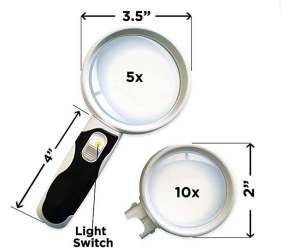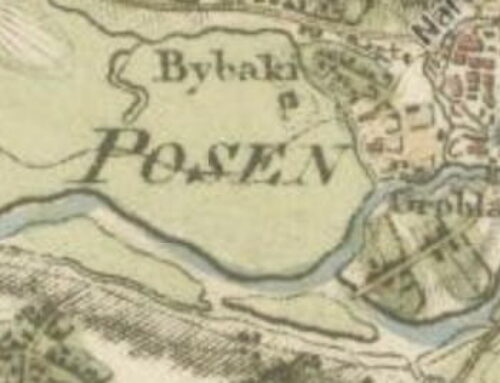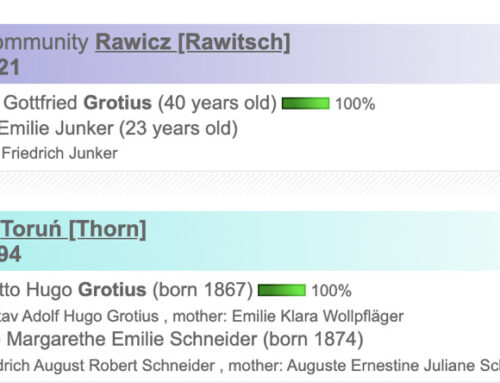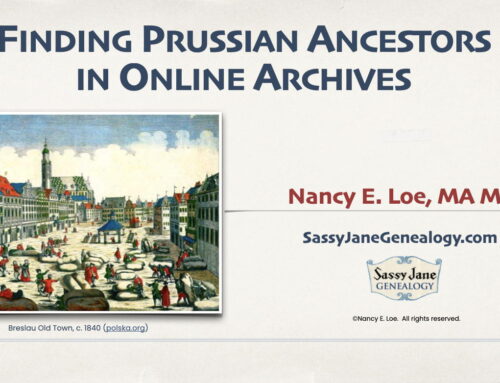The SLIG 2019 Reading Gothic Script and Fraktur class is my first genealogy treat to myself of the new year.
I’ve never had a head for languages. I believe my French professor in college was on the verge of offering me money not to take a class from her. And I never studied German.
So, to find myself keenly anticipating a #SLIG intensive course reading early German handwriting is a bit amazing to me. But excited I am. The principal instructor is Warren Bittner, whom I first heard at Jamboree in 2011. Back then, I despaired of ever finding my German ancestors, let alone reading their records. And now I’m going to learn Reading Gothic Script and Fraktur from Herr Bittner for a whole week.
Since that long-ago Jamboree, I’ve discovered my Germans were actually German-speaking Prussians. And I’ve taken two classes on reading German script in Santa Barbara. I’ve discovered this only makes me barely knowledgable and therefore dangerous. :) It’s time to pack for Salt Lake City and these are my essentials.
What I’m Taking to the Reading Gothic Script and Fraktur Class
 1. The German Card
1. The German Card
This ingenious little laminated business-sized card provides a wonderful shortcut for both Fraktur (printed) and Kurrentschrift (handwritten). The product of the Sacramento German Genealogical Society, the German card costs $5. It’s so helpful I have one at my desktop, one in my laptop bag, and I even carry one in my wallet.
 2. Thode’s German-English Genealogical Dictionary
2. Thode’s German-English Genealogical Dictionary
Ernest Thode’s reference work has helped me out of a translation hole more than once. Pricey at $35, but worth it. And worth the weight in my suitcase.
3. iMagniphy LED Illuminated Magnifying Glass Set
 After years of struggling along with whatever magnifier Staples was offering, I found the iMagniphy, with two lenses (10X + 5X). And it has a carrying pouch that prevents scratches, almost worth the purchase price alone.
After years of struggling along with whatever magnifier Staples was offering, I found the iMagniphy, with two lenses (10X + 5X). And it has a carrying pouch that prevents scratches, almost worth the purchase price alone.
4. Eyedrops
I think it’s a magnificent irony that my favorite genealogical library – the Santa Barbara County Genealogical Society’s Sahyun Library – was endowed by the guy who invented Visine. It gets the red out and finds primary and secondary sources!
5. Fonts
I’ve posted in my blog about my system for translating German genealogy records to English. Part of that system is to install two fonts that support older German characters on my computer. Greifswaler Deutsche Schrift and Sütterlin are both free and available for download at the links. As I transcribe, I use one of those fonts. Then I can clearly see if my word choices match the original record, as seen in the visual below.
I won’t leave home without these items. Fellow classmates, what are you bringing? And wish me luck taking #SLIG2019 Course 9: Gothic Script and Fraktur: Reading Records of Germany, Austria, Switzerland, Poland, and the Czech Republic, plus German-American Church Books and Newspapers.
PS – Do you know about the International German Genealogical Partnership Conference in Sacramento in June? I’ll be there, both presenting and learning. It’s going to be a great genealogy year!






Leave a Reply